
Your Surfboard Guide
The surfboard
Whether you’re a beginner or a pro, you’ll find all the important surfboard info here. Depending on the purpose of use and skill, there are different forms of the surfboard. These determine the turning behavior, buoyancy, etc., and ultimately the use of the board. For the beginner, a long, wide and thick board usually provides a lot of fun after a few tries. Whereas the advanced surfers reach for the shortboard, which has better maneuverability and maneuverability due to its small size. The size of a surfboard is usually expressed in feet (feet) and inches (inches).
We use KANOA and OCEAN&EARTH performance softboards at our camp for the beginner course, which are guaranteed to teach you how to surf!
For all experts among you we have a big quiver of surfboards for rent – longboards, funshapes, fish- & shortboards, we have a lot at the start!
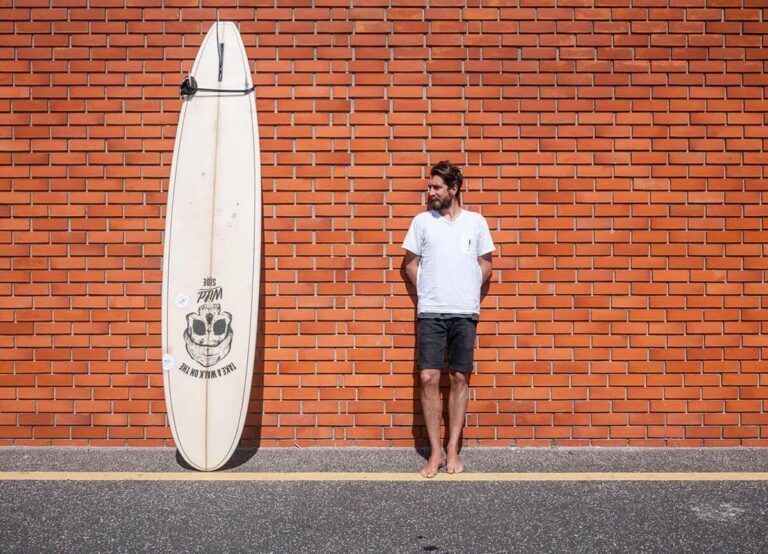
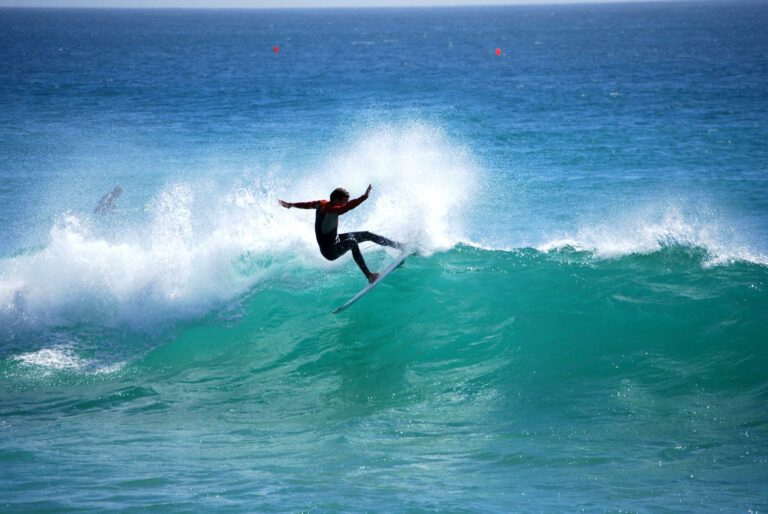
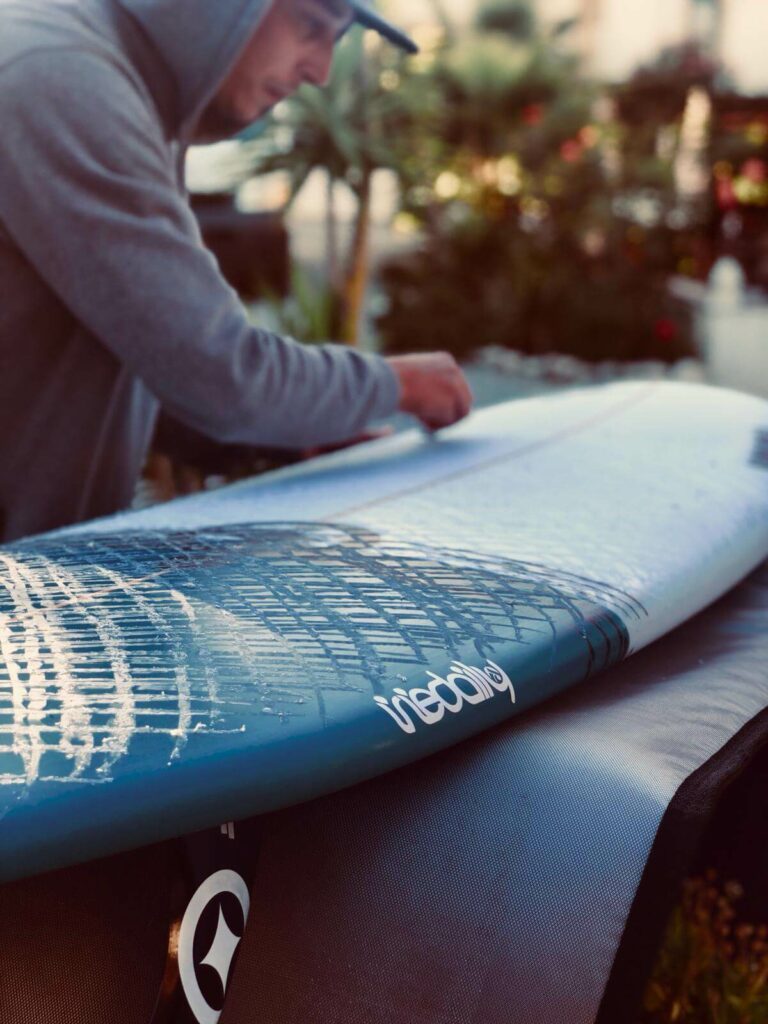
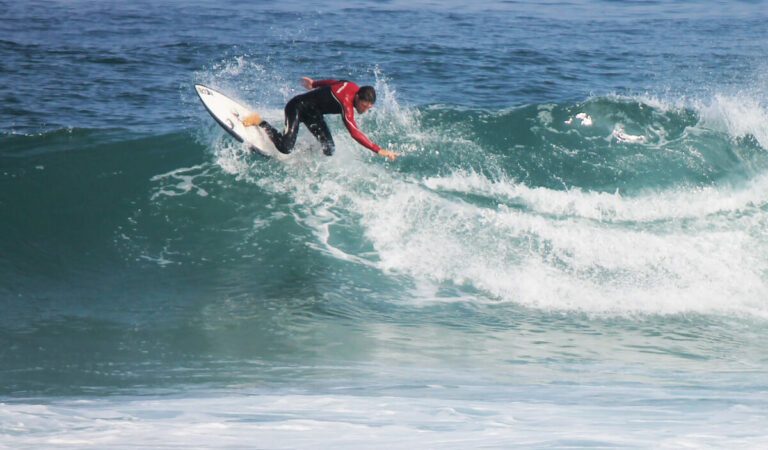
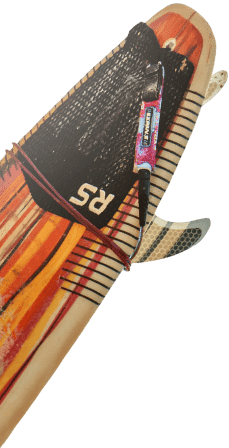
Surfboard Policy
THE BODY WEIGHT
Success and fun in surfing depend very much on the right surfboard that fits your weight. Generally speaking, beginners and heavy people need a bigger surfboard. Better surfers and lighter people tend to use smaller surfboards.
NO SURFBOARD TOO SMALL!
A very common mistake when buying a new surfboard, usually resulting from overconfidence, is to choose a board that is too small. Basically you can say: The bigger your board is, the easier it is to paddle the wave and the safer you surf in the wave!
BOARD WITH INCREASING CAN SWITCH
Surfboards are relatively inexpensive and can usually be bought used and resold well. So it makes sense, at least in the beginning, to change the board more often and according to the learning success. Generally, you start your surfing career with a relatively large surfboard and move up to smaller surfboards as your skills increase (unless you develop into a longboarder).
THE VOLUME AND THE SURFBOARD SHAPE
The volume and shape of the surfboard are the most important factors of a surfboard. Often, when buying a surfboard, people only pay attention to the length. However, the volume (measured in liters) and the shape of the board are much more important. The volume (calculated from width x thickness x length) determines how much buoyancy your board has. The shape, below you will find a preview of the most common shapes, most notably the rocker (this is the bend), width of the nose (this is the tip of the board) and the tail (the back of the board), define the surfboard. Basically you can say that thin, narrow & pointed surfboards are hard to ride.
THE TRADITIONAL PRODUCTION OF SURFBOARDS
Classically, surfboards are made by hand from fiberglass and polyester. We visit the FATUM surfboard workshop 1 time a week, where you can see how a surfboard is made.
When buying a polyester board, you should already know approximately what you want to have. The shaper should always advise you intensively and personally before the purchase, respectively. the manufacture of your surfboard. In this respect, these surfboards make little sense as a first purchase, since you should first test your level with test boards in the beginning. In addition, polyester boards are quite sensitive.
EPOXY SURFBOARDS
Many surfboards are now industrially manufactured from epoxy. These boards are usually suitable for a wide range of surfers and surf conditions. However, you can not have your desired surfboard seen, so you buy “off the shelf”. Good epoxy boards are very hard and thus almost indestructible, quite easy to repair and thus usually last longer than a classic polyester surfboard.
SURFBOARD LENGTH SPECIFICATIONS
Surfboard length is traditionally measured in feet and inches.
Here you can see some common example sizes:
| FOOT | 6’4 | 7’2 | 7’10 | 8’6 | 9’0 |
| CM | 193 cm | 218 cm | 239 cm | 262 cm | 274 cm |
Surfboard shapes

The longboard

The giant among surfboards. The classic longboard is the largest board on the water with a length between 9’0” and 10’0” a width of 22”and with 3” to 4” thickness. The size and the high volume allows very early paddling and planing and a very high stability – but you are not so agile and fast. Historically, longboards were surfed exclusively until the 1960s.
The Gun

A special form is the so-called Gun, which have a length of 7′ to about 12′. They have a pointed and slim design and are used in large waves. The small width allows high speeds, and due to their length they are stable in the water even at high speed.
The Funshape

The Funshape is the board type most often seen in surf schools. The shape is similar to the longboard, but shorter with a length between 7’4” and 8’6”, the width is usually between 20” and 22”. Within the funshapes there are also still different forms, but the most common is the “Minimalibu”. Handling is “easier” than with the longboard, but the Funshapes exhibit similar gliding and paddling characteristics.
The Evolution

Evolution boards are designed for beginners to get started on shortboards. They are similar in shape to the shortboard, but are wider, longer and have more volume.
The shortboard
 The shortboard is usually between 5’6 and 7′ in length, approximately 17-19 inches wide, and 2-3 inches thick. The low volume is the reason for the low buoyancy – the board is therefore more difficult to paddle or you catch the wave later.
The shortboard is usually between 5’6 and 7′ in length, approximately 17-19 inches wide, and 2-3 inches thick. The low volume is the reason for the low buoyancy – the board is therefore more difficult to paddle or you catch the wave later.
The Fish / Egg
 A short board with a width of about 20”. Despite the short length, the fishboard has a high volume due to its thick rails and thus also glides early. The board is ideal for smaller waves and advanced surfers.
A short board with a width of about 20”. Despite the short length, the fishboard has a high volume due to its thick rails and thus also glides early. The board is ideal for smaller waves and advanced surfers.
The softboard / beginner surfboard
 Soft surfboards (or just softboards) are the ideal companions for beginners. We usually use softboards in the size 7’0” – 9’0” in the beginner surf course. The risk of injury is significantly lower than with a “normal” surfboard due to the soft surface. In addition to the soft surface, the fins are molded from a soft plastic and more rounded, which significantly reduces the risk of injury. Softboards are also quite insensitive.
Soft surfboards (or just softboards) are the ideal companions for beginners. We usually use softboards in the size 7’0” – 9’0” in the beginner surf course. The risk of injury is significantly lower than with a “normal” surfboard due to the soft surface. In addition to the soft surface, the fins are molded from a soft plastic and more rounded, which significantly reduces the risk of injury. Softboards are also quite insensitive.
Often softboards are frowned upon as beginner boards, but the handling is very good that they are ridden even in challenging waves and by good surfers. At the big beaches in California there is already a “normal” surfboard ban, so the surfers all resort to softboards – well-known labels like Ocean&Earth already offer performance softboards by now!